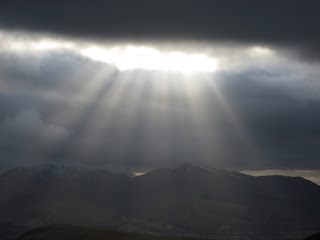The walk also took in two stone circles - White Moor and Scorhill - and passed the beautiful swimming hole at Shilley Pool. I'll be back there for a wild camp later in the season.
Some sections needed a bit of navigational improvisation, linking up the unmapped paths that you find all over the moor, and which usually take you where you want to go ... except for when they just disappear into a bog.
I took what looked like a shortcut from Watern Tor, hand-railing the North Teign River along to Scorhill Down, that was mostly dry, although the few sections of bog-hopping probably made it slower than the higher and longer traverse in Deborah's instructions.
I love the expansive mystery of Dartmoor - its brutal emptiness makes distances illusory, and bad weather can change everything so quickly. The modern world is distant. Over ten miles I saw two humans from afar, a few ponies and some sheep.
Dartmoor does stone circles like nowhere else. What happened to the Bronze Age people who lived here and dotted the moor with settlements and monuments? One theory is environmental collapse: once the forests were all felled, the hunting was over and the acidic peat soil was over-grazed and over-cropped. Sounds depressingly plausible.
Whatever their original function, Dartmoor's stone rows and circles strike me as perfect art works in the landscape: purposeful, social, universal, unfathomable. Time has blurred its meaning, but the poetry endures.














